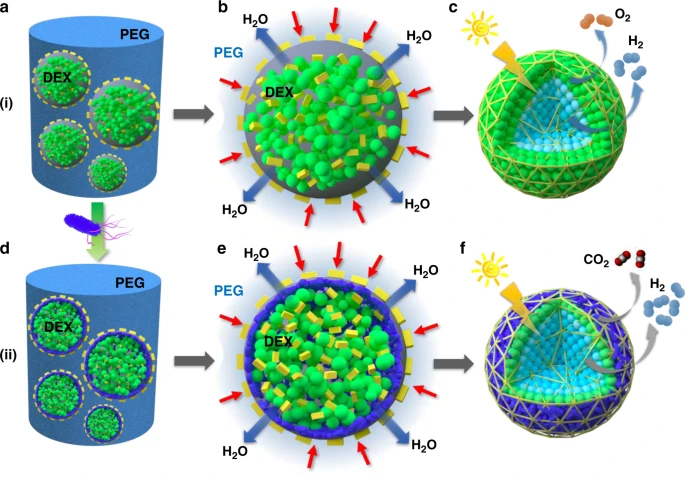Phys.org November 25, 2020
Normally, algal cells fix carbon dioxide and produce oxygen by photosynthesis. An international team of researchers used sugary droplets packed with living algal cells to generate hydrogen, rather than oxygen, by photosynthesis. They trapped ten thousand or so algal cells in each droplet, which were then crammed together by osmotic compression. By burying the cells deep inside the droplets, oxygen levels fell to a level that switched on special enzymes called hydrogenases that hijacked the normal photosynthetic pathway to produce hydrogen. In this way, around a quarter of a million microbial factories, typically only one-tenth of a millimeter in size, could be prepared in one milliliter of water. To increase the level of hydrogen evolution, the team coated the living micro-reactors with a thin shell of bacteria, which were able to scavenge for oxygen and therefore increase the number of algal cells geared up for hydrogenase activity. According to the researchers the methodology is facile and can be scaled-up without impairing the viability of the living cells. The work provides a step towards photobiological green energy development under natural aerobic conditions…read more. Open Access TECHNICAL ARTICLE

Schematic illustration showing the assembly, spatial organization, and dual functionality of multicellular droplet-based living micro-reactors. Credit: Nature Communications volume 11, Article number: 5985 (2020)